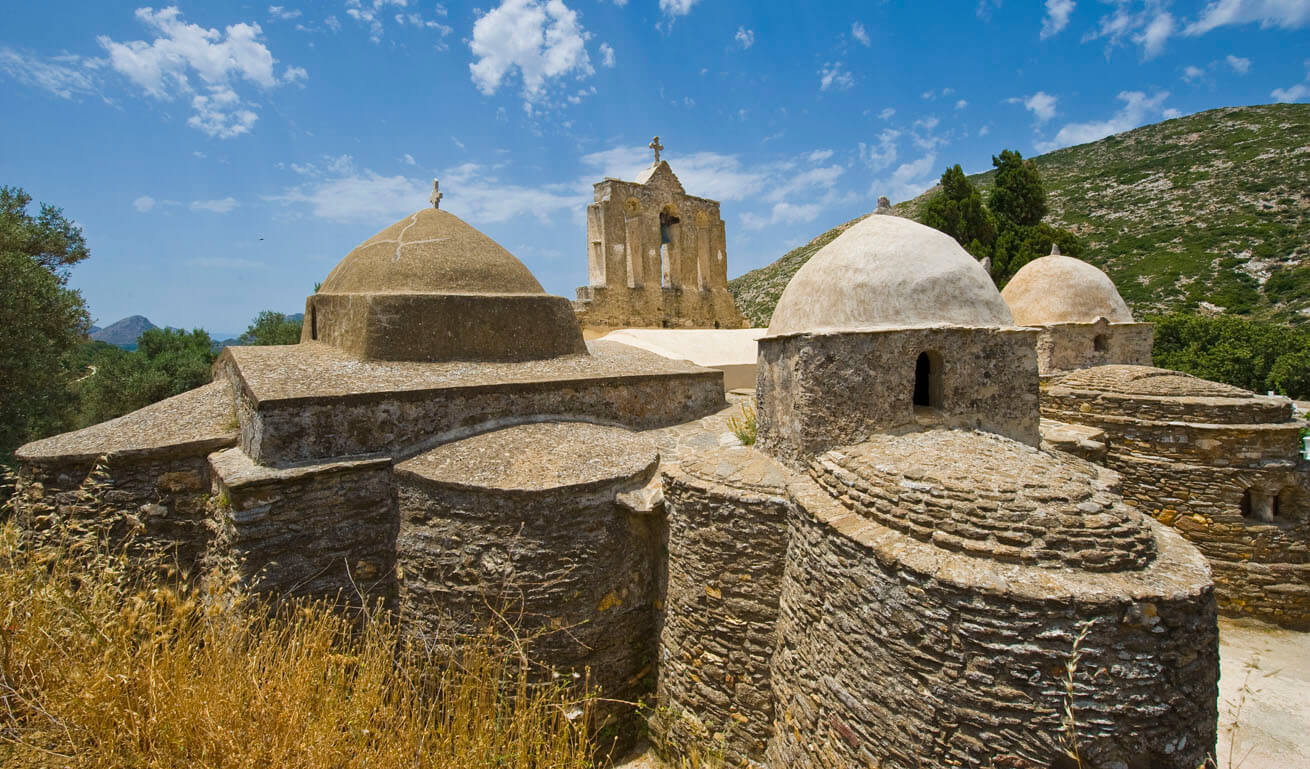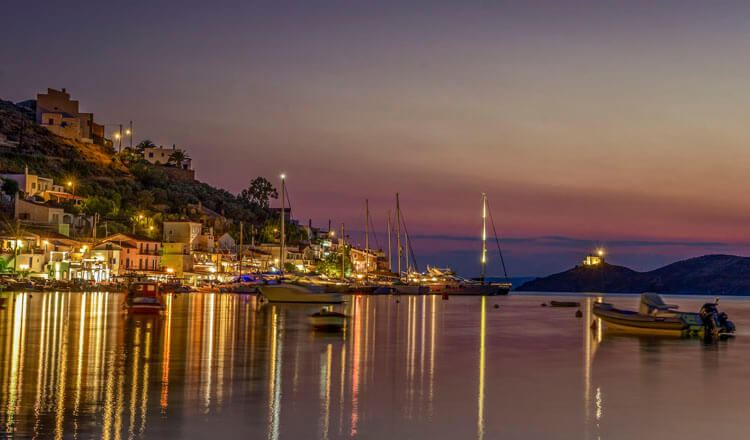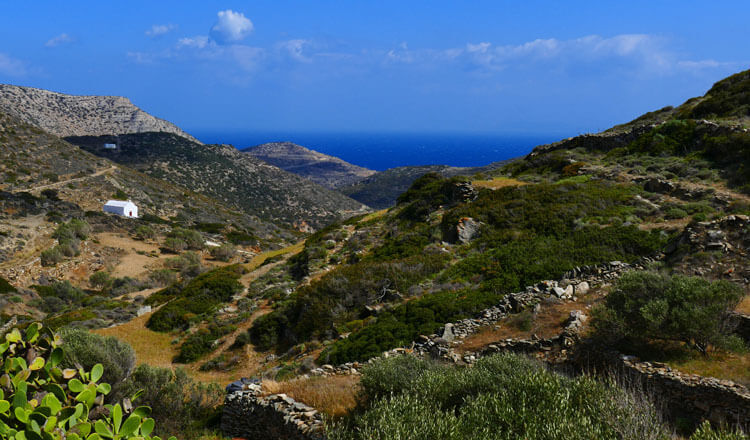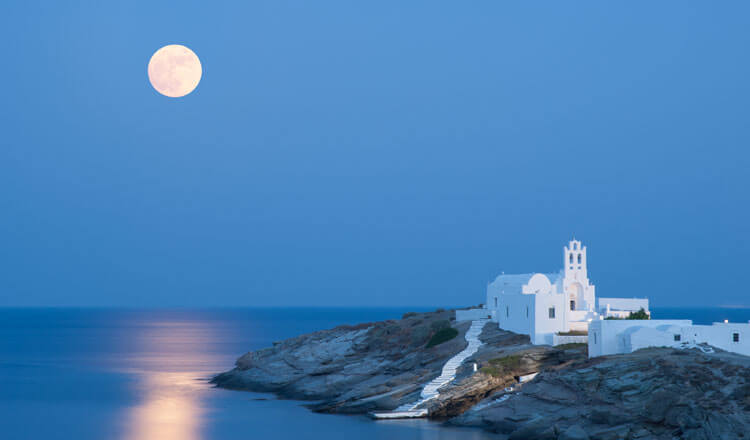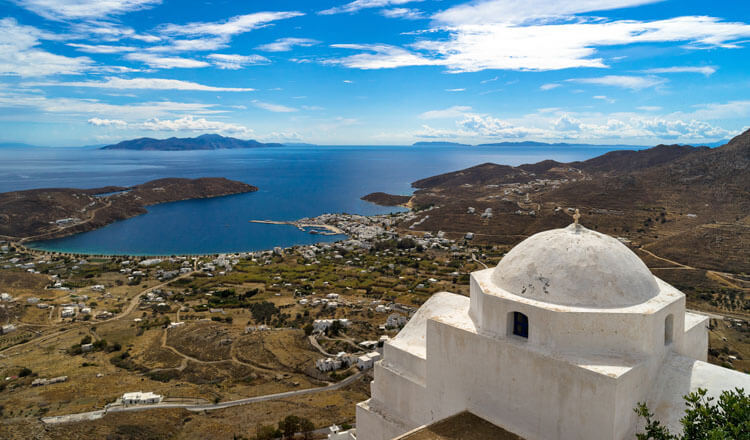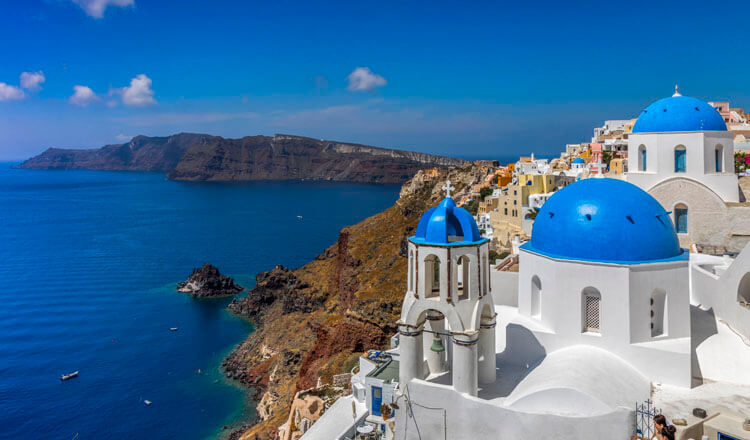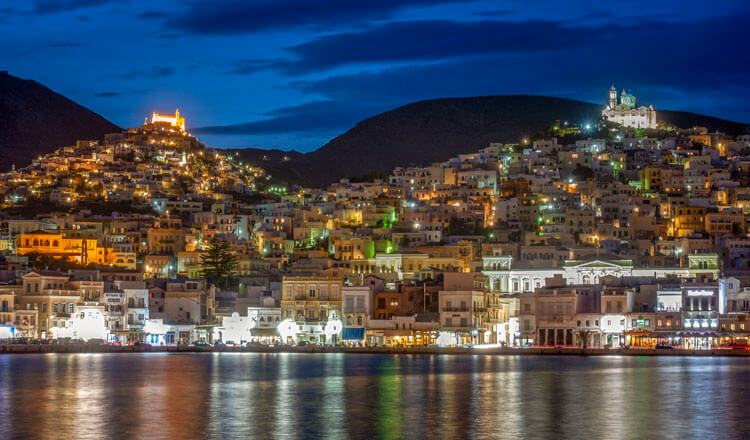Chora
The capital of Naxos carries all the typical features of a Cyclades island, and quite a few of its monuments date to various historical periods. Its heart beats in Old Chora, the fortified town with the cobble-stone alleys and the Venetian walled houses. The front doors of the grand residences still bear the coat of arms of their Venetian owners; the narrow backstreets and the galleries, the catholic churches and the fortifications have created a unique mixing of Cycladic and mediaeval architecture. Visit the Archaeological Museum, where you’ll see a large variety of finds dating as far back as the Late Neolithic period and up until the Early Christian times. The impressive collection of Cycladic figurines holds a prominent position among the displays.
Apeiranthos (aka Aperathos)
The beautiful traditional villages of Naxos are must-visit places during your tour of the island; lovely Apeiranthos is a mountain village in the centre of Naxos. Here, time has stood still: stroll by its stone-built houses, the beautiful squares and narrow alleys paved with marble, and visit its five museums, which attest to its age-old spiritual and artistic heritage. Locals hold on to their traditions and their dialect. It is believed that the village was built by Cretan settlers who arrived in the area. A short distance away from Apeiranthos, visit the beautiful 6th century Byzantine Panagia Drosiani church, which is one of the earliest Christian monasteries in the Balkans.
Filoti
Built on a slope of Mt. Zas, this very picturesque mountain village is located south of Apeiranthos, on a 400 m. elevation. The cube-shaped little houses and the narrow stone-paved backstreets are set in a verdant countryside. Visit Panagia Protothroni Church (9th - 10th c.), the largest Byzantine church on Naxos, with amazing murals. The Tragaia area is where you’ll find other interesting churches, which date from the 6th up to the 11th c. See also Panagia Filotissa church, and its impressive belfry. Make sure you also visit the 17th c. fortified Barozzi-Gratsia tower and the Markopoliti Tower, which are both located in Chalki (3km NW), as well as the 4th c. BC Cheimarros Tower.
If you like birdwatching, head to Agiassos Wetland, an area preferred by migratory birds.
Sagri
This village is made up of three neighbourhoods: Ano Sagri, Kato Sagri and Kanakari. There are two Venetian palaces (the Bazaios Tower and Sommaripa Tower) and traditional windmills. The plain next to Kato Sagri has been dubbed Little Mystras, because it holds a large number of Byzantine Churches, such as the 9th c. Agios Mamas Church. A short distance away from Sagri, you can visit the sanctuaries of goddess Demeter and god Apollo (on Gyroulas Hill), constructed of white marble in the 6th c. B.C. The finds from this ancient monument are showcased in a museum built in the archaeological site.
Agios Prokopios
The area is a popular holiday destination with a very long sandy beach and crystal-clear waters. It was named after the picturesque small church of Agios Prokopios, which you will see by the beachside.
Agia Anna
This seaside resort is located on the west side of the island, south of Chora. Its long and sandy seashore is counted among the most popular beaches on Naxos Island.
Galini
The village is built in a fertile plain and it is well-known as the location of the impressive fortified Monastery of Ipsilotera (1600). Nearby Engares village (1km E) is surrounded by green countryside and freshwater streams.
Melanes
Visit this beautiful hamlet in a leafy area with water springs. Kouros of Melanes (7th c. BC) is a very large statue of a male youth, which you can see in the area. Make sure you also visit the Palace of the Jesuites (17th c.) and the Venetian palaces of the noble families of Marco Sanudo, Mavrogeni and Frangopoulos.
Plaka
The village is located on the west side of the island, south of Chora, and it was built by a picture-perfect cove with a lovely beach. See also the ruins of the ancient tower on Palaiopyrgos location, near Agios Matthaios beach.
Apollonas
This seaside village is on the island’s NE coast. Along the harbour you’ll find fish tavernas with a lovely view. Near Apollonas, at the entrance of an ancient quarry, lies an unfinished Kouros [male youth] statue, which was never detached from the ground. The statue is 10.45m high, it dates back to the 6th c. BC, and it depicts god Dionysus or god Apollo. Visit also the nearby Tower of Agia (7.5km W), where you’ll get a fine view of the north part of the island.



